Guitar World Verdict
Even at this start-point, the Indus exemplifies Vigier: superbly detailed, thought-through and experience-led guitar making. Our belated congratulations for 40 years of great guitar making.
Pros
- +
All the quality, stability and precision.
- +
With sounds and playability to match.
Cons
- -
The 10/90 neck construction still polarises opinion.
- -
Little colour choice here.
You can trust Guitar World
Last year was Vigier’s 40th anniversary, quite a milestone for any maker, which in different times would have been celebrated. While we couldn’t pop a cork for that birthday, we can at least honour one of the finest – and now 30-year-old – modern bolt-on designs, the Excalibur.
It marks a significant point in Vigier’s history, replacing the almost experimental, pioneering, out-there designs of the company’s first decade with a much more conventional style.
“The way the guitars looked was one more reason why people were reluctant to try Vigier,” said founder Patrice Vigier back in 2012. “I made my choice: what is important is that people play the instruments or at least want to try them. If they’re reluctant to do that because they don’t like the shape, it’s a pity, especially if the guitar is good. And I think the guitars are good. I don’t want them to dismiss Vigier because of the shape – that’s why I went to a more traditional design.”
The Indus first appeared back in 1998 and stripped down the Excalibur, not least with its textured black finish – the complete opposite of posh. As we pull our sample from its mountain-climb-ready gigbag, we’re transported back to those heady days. Has anything changed? Quite a lot, actually.
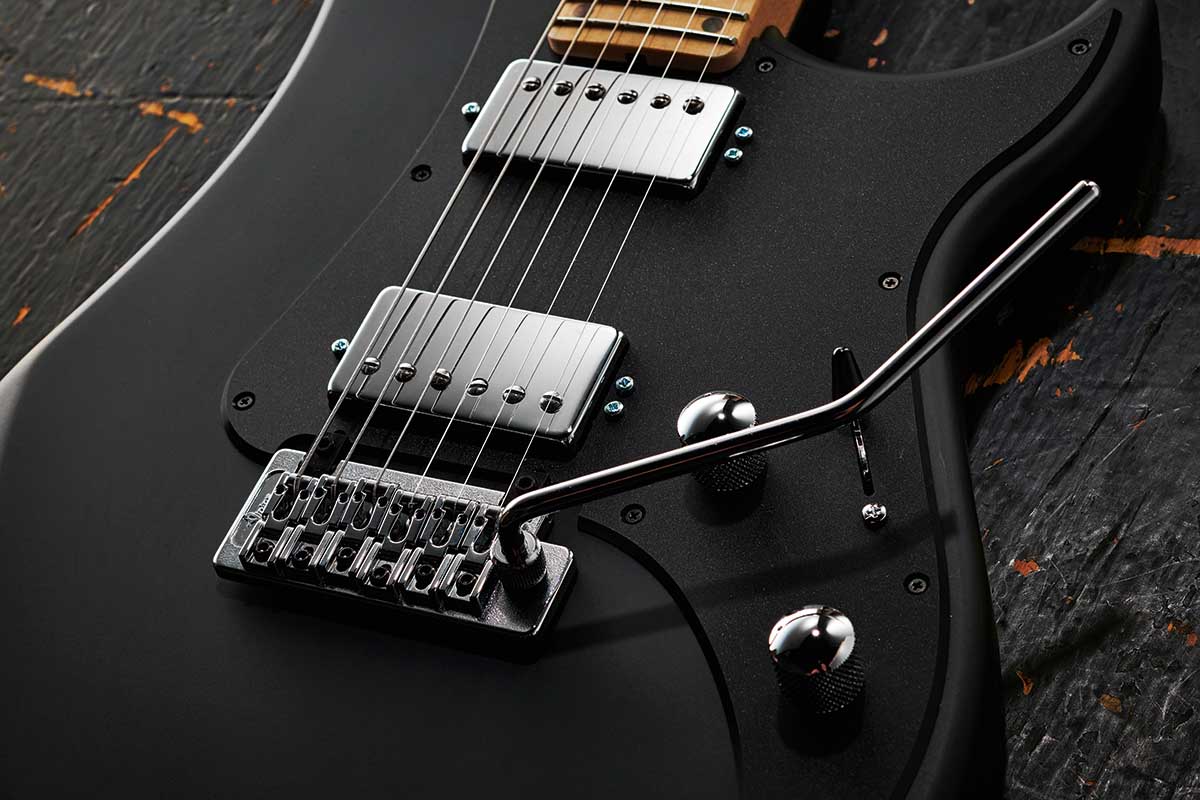
But if the Excalibur was Vigier going mainstream it was – as ever – on his terms. Suddenly, the ‘bonkers’ Frenchman had a hit on his hands and now the Excalibur defines the brand: a forward-looking bolt-on platform that, after all these years, is still challenging in its innovation.
At its core is the 10/90 system (10 percent carbon, 90 percent maple) of its neck design, still polarising after 32 years. A strip of carbon graphite runs up the centre of the French maple neck, like a skunk stripe – but it’s not covering an adjustable truss rod because there isn’t one.
While you’ll see graphite reinforcement in guitars from Charvel and others, they also offer an adjustable truss rod. Vigier’s non-adjustable neck remains unique in the electric guitar world, as far as we’re aware. Yet despite a prolonged stay at Customs (thanks, Brexit!) over unseasonably cold Easter weather, the guitar is perfectly in tune on its eventual arrival directly from France. Perfection is as key to the Vigier proposition as it ever was.
One change that was ushered in at the start of 2020 is that finish. While still a very functional-looking matt black, it’s no longer the simple spray-on textured paint of the original. Here, a standard gloss finish is applied, but instead of being buffed to a gloss sheen it’s cut back to a smooth matt.
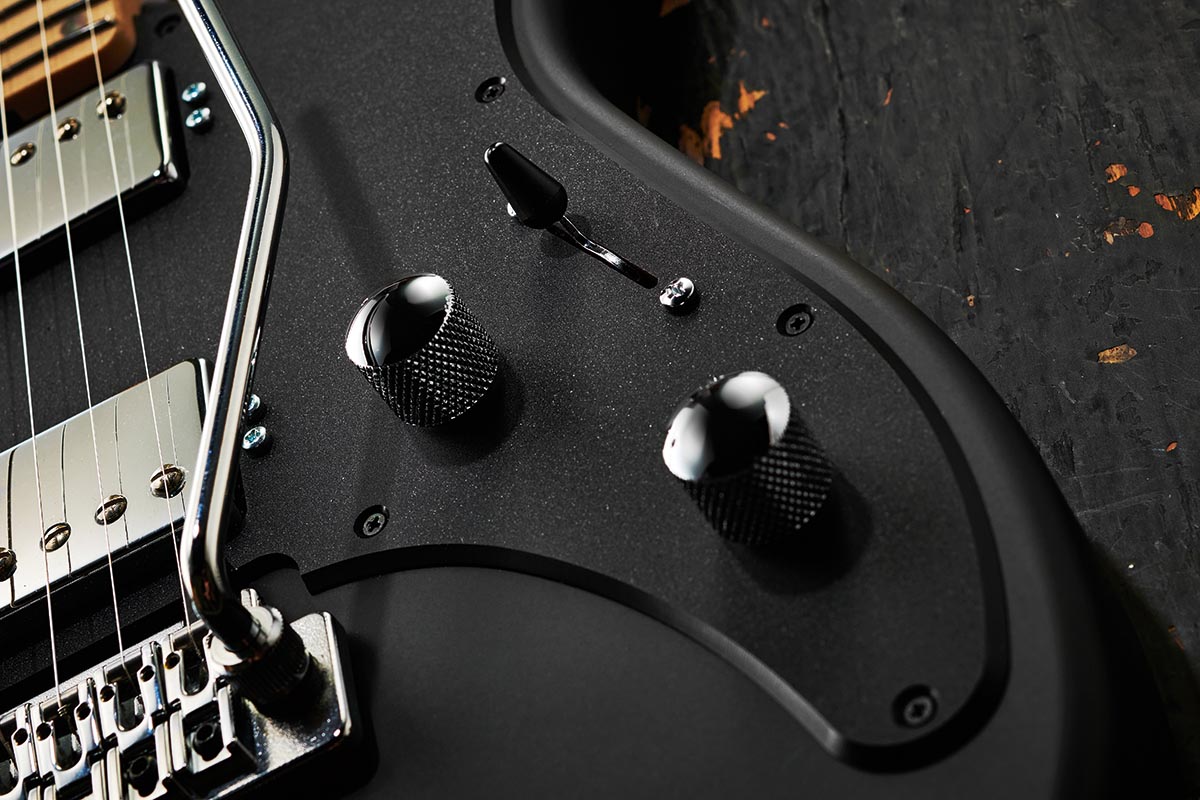
While that 10/90 neck is the primary innovation, there are numerous details that further differentiate a Vigier from any other electric guitar. The simple Flexretainer string trees, for example, are string ball-ends that pass through the headstock and are anchored on the rear.
A zero fret sits in front of the Teflon top nut – actually just a string guide – and is now a six-piece design so that if any wear on the hardened stainless steel occurs you can simply change the worn piece under the specific string.
That furry-looking caterpillar sits behind the nut to dampen any unwanted resonances, not least when playing at high gain. Then there’s the unique needle-point mounting of the Vigier vibrato, based on the Schaller 2011 with its large cylinder saddles and push-in collar lock arm. With the locking tuners and their oversized rear lock barrels, it’s a very detailed vibrato system – and it really works.
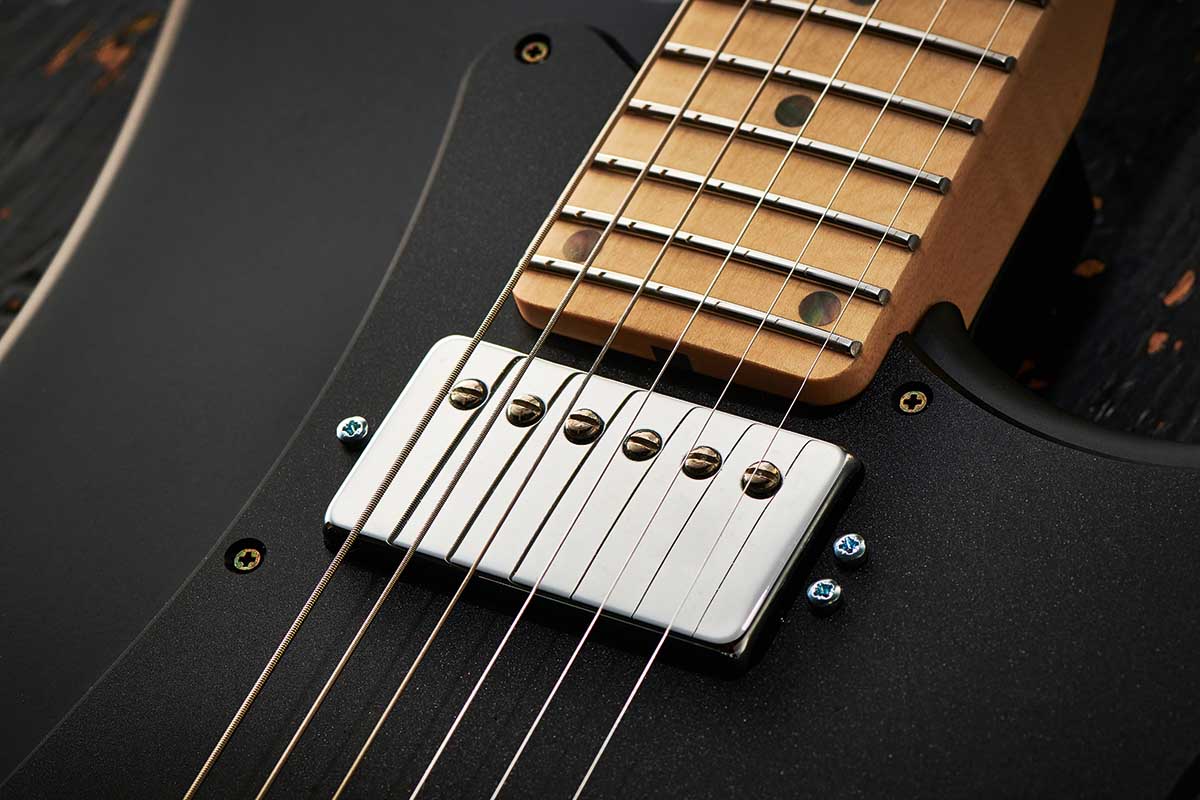
Unseen, the strap buttons actually bolt into threaded brass ferrules in the body wood; they won’t get loose or (at worst) pull out, rather like the Neutrik locking output jack.
More conventional are the humbuckers, DiMarzio PAF Classics, which are no longer offered by DiMarzio and remain unique to Vigier, not least in their chromed covers (which won’t tarnish, unlike more usual nickel), while the mounting has two screws on the treble side so you can tilt the pickups to exactly match the light back-angle of the neck.
The electronics are pretty straightforward and, aside from the solo humbuckers at the opposite ends of the five-way selector, the inner three positions are all single coils: the screw coils of each and, in the centre position, the screw coil of the neck and the slug coil of the bridge in a hum-cancelling combination.
Feel & Sounds
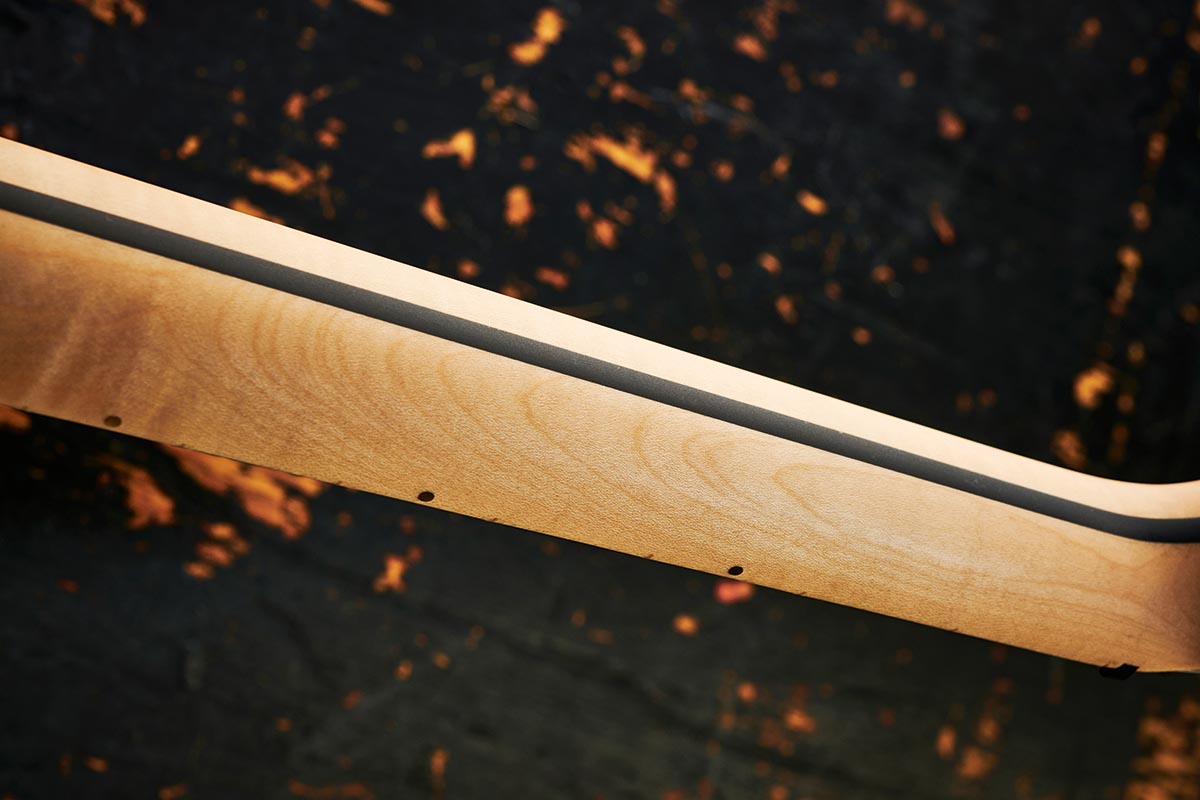
The neck construction may be slightly unusual, but its shape is superb, a beautifully graduated C with the edges rounded in like boat sides, with a relatively shallow 19.7mm depth at the 1st fret and 23.35mm by the 12th. It’s pretty similar to PRS’s Pattern Thin, dimension-wise, but it feels slightly bigger and has a super-smooth matt/satin finish.
The heel is squared, Fender-style, but the geometry of the cutaways is very considered, giving excellent access to the top 24th fret. The stainless steel frets themselves, which sit on the Gibson-like 300mm (11.6-inch) radiused face, aren’t over-big or wide (approx. 2.6mm by 1.2mm), and are super smooth.
The setup is pretty mainstream, too: just over 1.5mm on the treble side, airier on the bass at just under 1.8mm with around 0.09-inch’s relief. It just feels right and intonation is bang on, a supremely in-tune guitar even with some energetic whammy use, the vibrato set with around a minor 3rd up-bend on the G with generous down-bend.
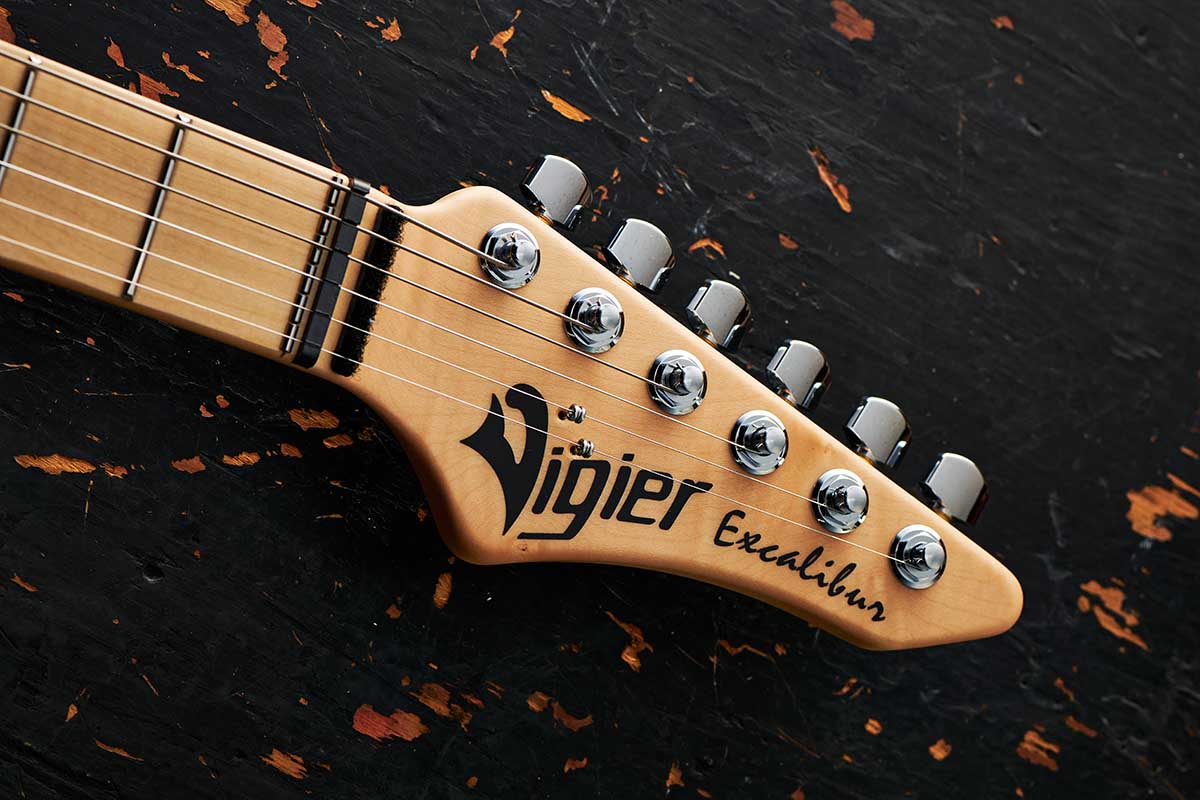
Unplugged, there’s a noticeable smoothness to the response, less of the acoustic-y zing of our Stratocaster, but there’s no lack of bite to those single-coil sounds, while the mix softens the attack slightly and provides a stellar modern funk voice.
Either side of that single-coil centre are beefier, almost single-cut-like voices that round out the clarity of so many more contemporary PAF-alikes, adding real thickness that just excels at crunchy overdrive and beyond.
Yes, pulling back the volume and obviously the tone does attenuate some of that clarity, but in so many ways the Indus seems to want us to use the rotary controls less than that pickup selector, certainly running through our pedalboard or Line 6 Helix. In fact, as a recording tool, the Indus excels.
The intonation and tuning stability married with a very flexible array of sounds give a wide palette, particularly using dual-amp setups. There’s surprising depth to the contrasting voices, too.

Verdict
There’s no shortage of small- or large-scale ‘modern’ bolt-ons and this sort of money gives you huge choice, certainly getting you into Suhr’s catalogue and Fender’s new Ultra Luxe range – just the tip of the iceberg. There’s little doubt, though, that Vigier holds its own, and the Excalibur – not to mention the slightly more retro Expert models – provide considerable choice.
That 10/90 neck might be the sticking point for some, but, really, after 32 years, would Vigier still use it if it didn’t work at a professional level? Of course not.
Even at this start-point, the Indus exemplifies Vigier: superbly detailed, thought-through and experience-led guitar making. Our belated congratulations for 40 years of great guitar making.
Specs
- PRICE: £2,431 (inc gigbag)
- ORIGIN: France
- TYPE: Solidbody electric
- BODY: 2-piece alder
- NECK: Vigier 10/90 system (10% carbon, 90% maple), maple, bolt-on
- SCALE LENGTH: 650mm (25.6”)
- NUT/WIDTH: Teflon string guide with hardened 6-piece removable zero fret/42.7mm
- FINGERBOARD: Maple, dark abalone dot inlays, 300mm (11.81”) radius
- FRETS: 24 (plus zero fret), medium stainless steel
- HARDWARE: Chrome-plated Schaller/Vigier 2011 vibrato with ball-bearing pivot; locking tuners with over-sized rear locking wheels – chrome-plated
- STRING SPACING, BRIDGE: 53mm
- ELECTRICS: 2x DiMarzio PAF Classic humbuckers, 5-way lever pickup selector switch, master volume and master tone
- WEIGHT (kg/lb): 3.48/7.66
- OPTIONS: Rosewood ’board and fixed bridge at no cost. Up-charges include matching headstock (£300), push-pull pickup split (£154), kill switch (£154) and strap lock system (£58)
- RANGE OPTIONS: Top-line Excalibur Special with bound flame maple top and Amber HSH pickups and some 18 colours starts from approx. £2,946
- LEFT-HANDERS: Yes, no extra charge
- FINISHES: Black Matte (as reviewed), White Matte
- CONTACT: Vigier

Dave Burrluck is one of the world’s most experienced guitar journalists, who started writing back in the '80s for International Musician and Recording World, co-founded The Guitar Magazine and has been the Gear Reviews Editor of Guitarist magazine for the past two decades. Along the way, Dave has been the sole author of The PRS Guitar Book and The Player's Guide to Guitar Maintenance as well as contributing to numerous other books on the electric guitar. Dave is an active gigging and recording musician and still finds time to make, repair and mod guitars, not least for Guitarist’s The Mod Squad.
“It holds its own purely as a playable guitar. It’s really cool for the traveling musician – you can bring it on a flight and it fits beneath the seat”: Why Steve Stevens put his name to a foldable guitar
“Finely tuned instruments with effortless playability and one of the best vibratos there is”: PRS Standard 24 Satin and S2 Standard 24 Satin review











